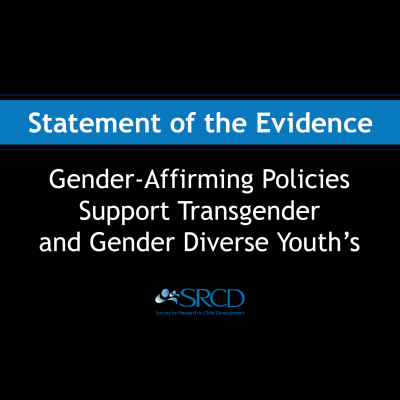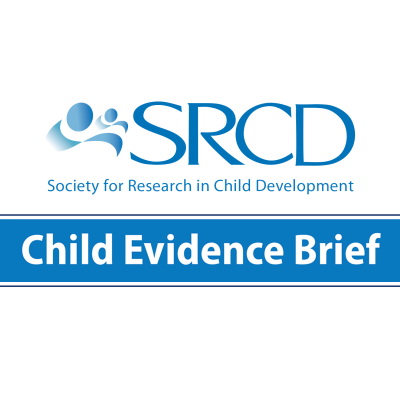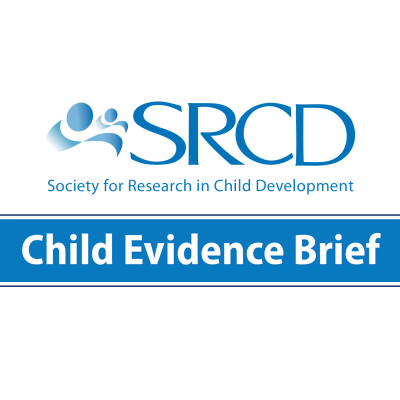Addressing Inequities in Education: Considerations for Black Children and Youth in the Era of COVID-19
Edited by Tiffany Yip, Ph.D., Fordham University. For more information, contact Kelly R. Fisher, Ph.D., Director for Policy, or Nighisti Dawit, M.Sc., Senior Policy Associate, Society for Research in Child Development, at policy@srcd.org.
Authors
- Noni Gaylord-Harden, Ph.D., Texas A&M University
- Valerie Adams-Bass, Ph.D., University of Virginia
- Erin Bogan, Ph.D., American Institutes for Research
- Lori Francis, Ph.D., Pennsylvania State University
- Judith Scott, Ph.D., Boston University
- Eleanor Seaton, Ph.D., Arizona State University
- Joanna Williams, Ph.D., Rutgers University
Data on COVID-19 transmission rates show an irrefutable and disturbing pattern: Black Americans are contracting and dying from COVID-19 at rates that far exceed other racial and ethnic groups. Through inequitable policies and practices, Black Americans are forced into conditions that elevate their risk for COVID-19, and consequently, place Black children at the epicenter of loss in multiple domains of life. This brief highlights the impact of the pandemic on Black children at the school, family, and individual levels by discussing how the pandemic affects academic performance and engagement, family economics and health, and children’s psychological well-being. With an understanding of the influence of systemic racism on COVID-19 disparities, we identify racial justice policy and practice recommendations that focus on equitable access to quality education to address the needs of Black children and families during and after the pandemic, including policies that fund access to information technology for remote learning, mental health services, and enhanced academic support.
Systemic Racism is the Pre-Existing Condition Affording COVID-19 the Opportunity to Disproportionately Impact the Black American Community
Systemic racism refers to mutually reinforcing systems and policies that limit power and access to opportunities to generate and perpetuate inequity among Black Americans. Although families of all racial and ethnic groups are adversely affected by COVID-19, Black families bear a disproportionate burden of this negative impact.1 According to the Centers for Disease Control and Prevention, Black Americans make up 13% of the U.S. population, but represent 33% of COVID-19 hospitalizations and 34% of COVID-19 deaths. In counties with predominantly Black residents, infection rates are three times higher and death rates are six times higher than rates in counties with predominantly non-Hispanic White residents.2
Due to systemic racism, Black Americans disproportionately face conditions that increase their exposure to COVID-19, and make social distancing challenging, including employment in essential industries,3 reliance on public transit,4 overrepresentation in correctional facilities,5 and crowded, substandard housing.6,7 Black Americans are more likely to be underinsured, receive low-quality healthcare, live in food deserts, and be exposed to indoor and outdoor environmental toxins,8,9 all of which are linked to underlying health conditions that heighten risk for COVID-19.10,11 This brief focuses on how Black children are impacted at the school, family, and individual levels.
Black Families are Facing More Severe Economic Consequences
Due to occupational segregation, a disproportionate number of Black Americans are in low wage jobs12 and have incomes below the poverty line,13 leaving them more financially vulnerable to the effects of COVID-19. With unemployment at an unprecedented high, 45% of Black workers have lost their jobs or had their hours reduced, which is 14% more than non- Hispanic White workers.14 Consequently, Black families are overrepresented among families experiencing food insecurity,15 difficulty paying bills, and housing instability.16
Black Children Face Disadvantages in Remote Learning Settings
Pre-existing disparities in access to adequate internet connections and computer technology are being exacerbated by a shift to remote learning during the pandemic that place Black children at a further disadvantage.17 Black parents have concerns about accessing resources or supplies to keep their children on track academically. Results of a survey conducted in April with parents in Texas, New York, California, and Washington show that one in five Black parents received little to no information from their school about remote learning resources during the pandemic.18 Responses from a survey conducted in March show that 25% of Black youth connected with teachers less than once per week.19 Further, Black parents disproportionately represent essential workers who are unable to work from home and, thus, less able to provide parental academic supervision and support necessary for remote learning.20,21
Schools That Serve Black Children are Less Able to Provide Remote Learning Experiences
Due to decades of under-investment in Black communities, Black children are more likely to attend schools that have fewer economic resources and less technology to support remote instruction,22 and the pandemic has strained the limited fiscal resources of these schools as they work to provide remote educational experiences.23,24 With students expected to lose one-third of pre-pandemic reading gains and half of math gains during the pandemic,25 the pandemic will further exacerbate existing disparities in achievement caused by systemic racism.
Black Children are Experiencing Elevated Levels of Stress
Black children are particularly vulnerable to the psychological effects of the COVID-19 pandemic. Seventy-four percent of Black youth are worried about the effect COVID-19 may have on their family’s finances.19 Seventy-one percent of Black youth are worried that they or a family member will be exposed to the virus.19 Stressors related to COVID-19 are compounded by recent race-related traumas involving the disproportionate impact of police brutality on Black Americans and communities. Increased stress is intensified by social distancing, which disrupts daily routines and reduces contact with relatives, peers, and adult role models who can provide much-needed support.26 Similarly, Black youth are disproportionately exposed to family deaths27 and rates of loss are being exacerbated by COVID-19. Further, the loss of loved ones to COVID-19 is often rapid, unexpected, and social distancing disrupts families’ ability to grieve.28,29
Policy and Practice Implications
To mitigate the disparate and deleterious effects of COVID-19 on Black children and families, policy efforts should address systemic racism and support equitable access to quality education for Black children. Efforts should incorporate the following recommendations:
- Increase investments in school infrastructure and remote learning resources to ensure Black children in underresourced communities have access to electronic devices with high-speed internet access necessary for distance learning.
- Ensure teachers serving Black children have the necessary professional training and resources to provide effective remote instruction (e.g., technology skills, online communication skills, curriculum design skills for engaged, interactive instruction, online assessment and evaluation skills, and skills to address unique socioemotional needs of online learning).
- Provide school districts with funding to enhance instruction that is responsive to Black students’ individual academic needs, including support for regular formative assessment of progress during and after the pandemic.
- Equip educators with the training and tools to help students cope with losses and stresses related to the pandemic, police brutality, and other racial traumas.
- Develop programs to provide tutoring to Black children, especially involving Black college students, during and after the pandemic.
- Invest resources in school-based health centers to provide high-quality health care and mental health care in underserved Black communities.
- Provide funding and waive eligibility verification for school nutrition programs to ensure children have access to free meal programs during school closures.
- Develop programs that facilitate partnerships between schools, community organizations, and social service agencies to provide support to families experiencing economic hardship.
- Implement fair tax strategies for education to provide funding that is adequate and equitable for student success, instead of relying on geographically based tax revenues that produce inequitable systems of funding for public schools.
- Reallocate crime reduction funds at state and local levels to education and social services in under-resourced Black communities (e.g., academic enrichment and youth< programs).
This brief is part of a larger volume that addresses the impact of systemic racism and the potential exacerbating effects of COVID-19 on racial-ethnic minority children, youth, and families, and LGBTQ+ youth. The full volume includes the following briefs:
- Considerations for American Indian and Alaska Native Children and Youth in the Era of COVID-19
- Considerations for Asian American Children and Youth in the Era of COVID-19
- Considerations for Black Children and Youth in the Era of COVID-19
- Considerations for Latinx Children and Youth in the Era of COVID-19
- Considerations for LGBTQ+ Children and Youth in the Era of COVID-19
Endnotes / References
(1) van Dorn, A., Cooney, R. E., & Sabin, M. L. (2020). COVID-19 exacerbating inequalities in the US. The Lancet, 395(10232), 1243-1244. https://doi.org/10.1016/S0140-6736(20)30893-X
(2) Thebault, R., Ba Tran, A., & Williams, V. (2020, April 7). The coronavirus is infecting and killing Black Americans at an alarmingly high rate. The Washington Post. https://www.washingtonpost.com/nation/2020/04/07/coronavirus-is-infecting-killing-black-americans-an-alarmingly-high-rate-post-analysis-shows/
(3) Rimmer, A. (2020). Covid-19: Disproportionate impact on ethnic minority healthcare workers will be explored by government. The BMJ. https://doi.org/10.1136/bmj.m1562
(4) Anderson, M. (2016, April 7) Who relies on public transit in the US. Pew Research Center. https://www.pewresearch.org/fact-tank/2016/04/07/who-relies-on-public-transit-in-the-u-s/
(5) Chisolm, D. J. (2017). Justice-involved youth: The newest target for health equity approaches? Pediatrics, 140(5). https://doi.org/10.1542/peds.2017-2800
(6) Drew, R. B., & Abu-Khalaf, A. (2020, April 15). Linking housing challenges and racial disparities in COVID-19. Enterprise. Retrieved June 2020, from https://www.enterprisecommunity.org/blog/04/20/housing-challenges-racial-disparities-in-covid-19
(7) Yancy C. W. (2020). COVID-19 and African Americans. JAMA, 323(19), 1891-1892. https://doi.org/10.1001/jama.2020.6548
(8) Dotinga, R. (2012). 'Health care deserts' more common in Black neighborhoods. Health Behavior News Service. Retrieved June 2020, from https://medicalxpress.com/news/2012-04-health-common-black-neighborhoods.html
(9) Sohn, H. (2016). Racial and ethnic disparities in health insurance coverage: Dynamics of gaining and losing coverage over the life-course. Population Research and Policy Review, 36(2), 181-201. https://doi.org/10.1007/s11113-016-9416-y
(10) National Center for Health Statistics. (2015). Summary health statistics: National health interview survey, 2014. Centers for Disease Control and Prevention. https://www.cdc.gov/nchs/nhis/shs.htm
(11) U.S. Department of Health and Human Services Office of Minority Health (2019). Black/African Americans Health Profile. https://www.minorityhealth.hhs.gov/omh/browse.aspx?lvl=3&lvlid=61
(12) Hawkins, D. (2020, April 16). The coronavirus burden is falling heavily on Black Americans. Why? The Guardian. https://www.theguardian.com/commentisfree/2020/apr/16/black-workers-coronavirus-covid-19
(13) Semega, J. L., Fontenot, K. R., & Kollar, M. A. (2017, September 12). Income and poverty in the United States: 2016. Current Population Reports, P60-259. https://www.census.gov/library/publications/2017/demo/p60-259.html
(14) Swasey, C., Winter, E., & Sheyman, I. (2020, April 9). Memo: The staggering economic impact of the coronavirus pandemic. Data for Progress. https://filesforprogress.org/memos/the-staggering-economic-impact-coronavirus.pdf
(15) Share Our Strength. (n.d.). Food insecurity, children, and race: A look at household food insecurity among adults and children of varying races. No Kid Hungry. http://join.nokidhungry.org/site/DocServer/Food_Insecurity_as_it_relates_to_Race_and_Ethnicity.pdf
(16) National Low Income Housing Coalition. (2020) Eviction and foreclosure moratoriums. Retrieved June 2020, from https://nlihc.org/eviction-and-foreclosure-moratoriums
(17) Auxier, B., & Anderson, M. (2020, March 16). As schools close due to the coronavirus, some U.S. students face a digital ‘homework gap’. Pew Research Center. Retrieved June 2020, from https://www.pewresearch.org/fact-tank/2020/03/16/as-schools-close-due-to-the-coronavirus-some-u-s-students-face-a-digital-homework-gap/
(18) The Education Trust. Parents overwhelmingly concerned their children are falling behind during school closures. Retrieved June 2020, from https://edtrust.org/parents-overwhelmingly-concerned-their-children-are-falling-behind-during-school-closures/
(19) Wronski, L. (2020). Common Sense Media|SurveyMonkey poll: Coronavirus and teenagers. Retrieved June 2020, from https://www.surveymonkey.com/curiosity/common-sense-media-coronavirus/
(20) North, A. (2020, April 9) The shift to online learning could worsen educational inequality. Vox. https://www.vox.com/2020/4/9/21200159/coronavirus-school-digital-low-income-students-covid-new-york
(21) Dorn, E., Hancock, B., Sarakatsannis, J., & Viruleg, E. (2020, June). COVID-19 and student learning in the United States: The hurt could last a lifetime. McKinsey & Company. https://www.mckinsey.com/~/media/McKinsey/Industries/Public%20Sector/Our%20Insights/COVID-19%20and%20student%20learning%20in%20the%20United%20States%20The%20hurt%20could%20last%20a%20lifetime/COVID-19-and-student-learning-in-the-United-States-FINAL.pdf
(22) Reardon, S. F., & Owens, A. (2014). 60 years after brown: Trends and consequences of school segregation. Annual Review of Sociology, 40, 199-218. https://doi.org/10.1146/annurev-soc-071913-043152
(23) Camera, L. (2020, May 1). Schools face nightmare scenario after coronavirus crisis. U.S. News and World Report. https://www.usnews.com/news/education-news/articles/2020-05-01/schools-face-nightmare-scenario-after-coronavirus-crisis
(24) Sanders, C. (2020, May 15) Protecting against separate and unequal K-12 funding amid COVID-19. Center on Budget and Policy Priorities. Retrieved June 2020, from https://www.cbpp.org/blog/protecting-against-separate-and-unequal-k-12-funding-amid-covid-19
(25) Kuhfeld, M., & Tarasawa, B. (2020, April). The COVID-19 slide: What summer learning loss can tell us about the potential impact of school closures on student academic achievement. Collaborative for Student Growth/NWEA. https://www.nwea.org/content/uploads/2020/05/Collaborative-Brief_Covid19-Slide-APR20.pdf
(26) García Coll, C. (2020, June 3). My Turn: Cynthia García Coll: Let’s not forget the children during pandemic. Providence Journal. https://www.providencejournal.com/news/20200603/my-turn-cynthia-garciacutea-coll-letrsquos-not-forget-children-during-pandemic
(27) Umberson, D., Olson, J. S., Crosnoe, R., Liu, H., Pudrovska, T., & Donnelly, R. (2017). Death of family members as an overlooked source of racial disadvantage in the United States. Proceedings of the National Academy of Sciences of the United States of America, 114(5), 915-920. https://doi.org/10.1073/pnas.1605599114
(28) Boyraz, G., & Legros, D. N. (2020). Coronavirus disease (COVID-19) and traumatic stress: Probable risk factors and correlates of posttraumatic stress disorder. Journal of Loss and Trauma, 25(6-7), 503-522. https://doi.org/10.1080/15325024.2020.1763556
(29) Mayland, C. R., Harding, A. J. E., Preston, N., & Payne, S. (2020). Supporting adults bereaved through COVID-19: A rapid review of the impact of previous pandemics on grief and bereavement. J Pain Symptom Manage, 60(2), E33-E39. https://doi.org/10.1016/j.jpainsymman.2020.05.012


